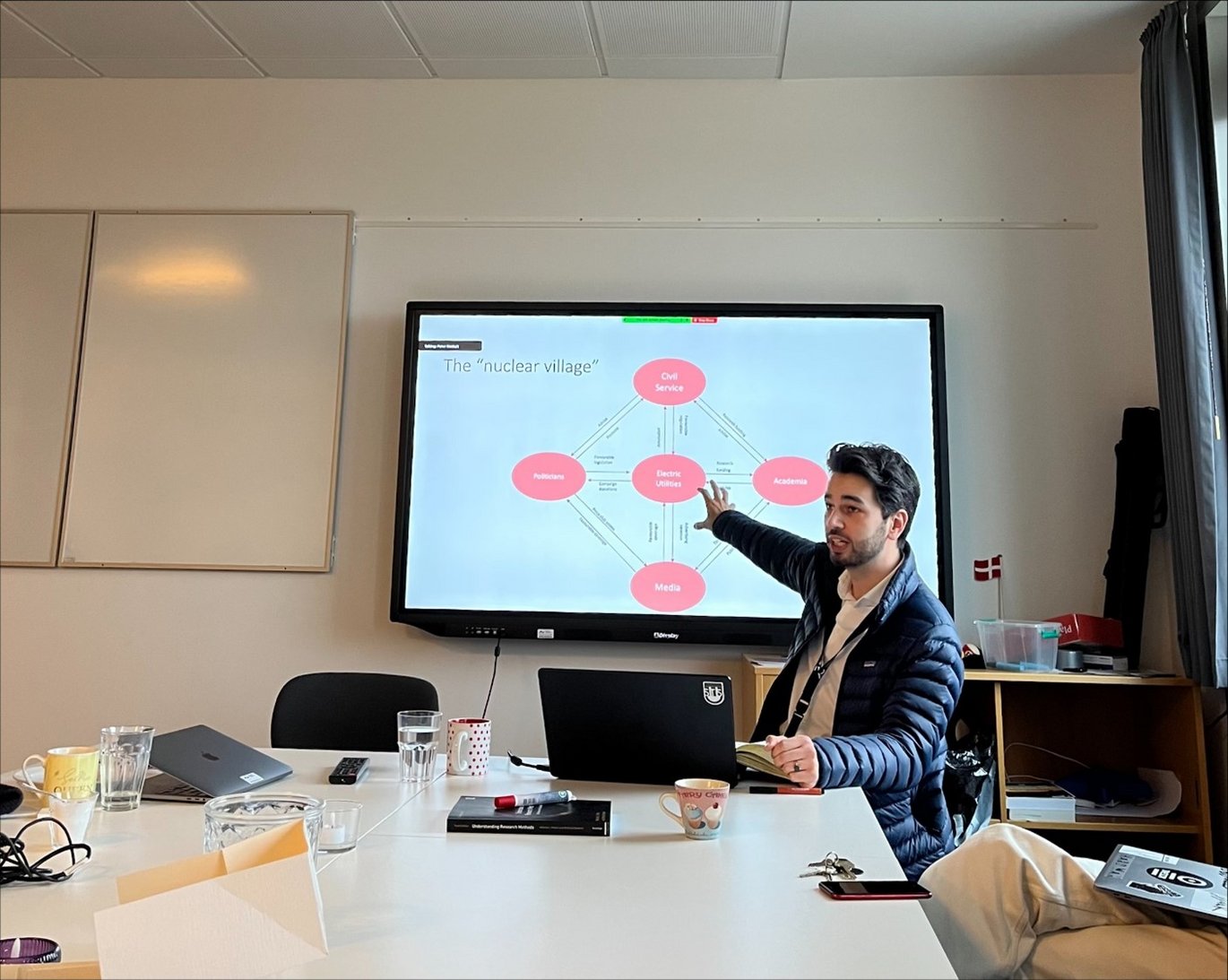Digital Citizenship and Participation in Nuclear Emergencies - Visit by Lecturer Makoto Takahashi
This week, SHAPE had the pleasure of welcoming Lecturer Makoto Takahashi as speaker at our second Sociotechnical Data Studies Saloon – a series of seminars seeking to facilitate dialogues on the digital and democracy across various disciplines.

Makoto Takahashi is Lecturer in Science and Policy at the Munich Centre for Technology in Society, Technical University of Munich and holds a BA and an MPhil in Geography from Cambridge University.
In his research, Takahashi is particularly focused on the radiation risk debate, and in 2019 he completed his PhD studies at Cambridge University with a dissertation on expert authority and low public trust in the wake of the 2011 Fukushima Daiichi nuclear power plant disaster. The project are based on extensive ethnographic fieldwork in Japan and continues to inform his current work on digital citizenship and participation. It also formed the background for his presentation at SHAPE’s Sociotechnical Data Studies Saloon on January 17.
Fukushima Daiichi as a Crisis of Public Trust
Takahashi opened his talk by outlining the context of his fieldwork on participation and digital citizenship; the public management of the Fukushima Daiichi nuclear power plant disaster in 2011, which caused a significant rise of public mistrust in the national authorities leading to a rise of public protests targeted at the Japanese authorities.
In addition to its historical position as a major human and environmental crisis, observers have in fact termed the Japanese nuclear disaster a regular crisis of public trust and described the protest movements as a revival of the civic sphere in Japan.
In the wake of the 2011 Fukushima Daiichi disaster, commentators hailed digital platforms as enabling new forms of citizenship, which would allow publics to shape the management of the disaster more directly; while institutions such as the International Commission on Radiological Protection (ICRP) have promoted “co-expertise” as a means to combat public distrust. Rather than echo these calls for more public participation, my project aims to examine the “participatory turn” itself – examining the forms of participation that have been celebrated and the forms of (digital) “citizen” they aim to produce.
– Makoto Takahashi (abstract… reference?)
Performativity and Discourses on Digital Participation
As such, digital circumstances prompted a new type of civic participation hitherto unseen in a Japanese context as digital platforms of communication both underpinned and drove the protest movements. Whereas many observers have given much attention to the rise of a new type of digital participation assigning the public more leverage, one of Takahashi’s main points in his presentation at SHAPE was that the conception of this new type of ‘digital citizen’ is in itself an interesting object of study; the Fukushima crisis of public trust serves, as Takahashi argued, not only as an expression of a new type of (digital) participation but as a testimony to the construction of discourses on democracy and participation that arose among different public operators and spectators in the wake of the Fukushima Daiichi disaster:
Noting that there is no precise Japanese analogue for the English word “citizen”, the project compares: the Metropolitan Coalition Against Nukes’ (MCAN) efforts to mobilise cosmopolitan citizen (shimin) protestors; SAFECAST’s efforts to produce citizen scientists (shimin kagakusha); the International Commission on Radiological Protection’s efforts to engage local citizens (jumin) as “co-experts”; and the right wing forums production of “alternative science” produced by national citizens (kokumin).
– Makoto Takahashi (abstract… reference?)
Takahashi is currently working on a monograph based on his ethnographic fieldwork on public mistrust in Japan following the nuclear disaster, which will be published __. He is author of several academic publications, policy reports, and memos.
